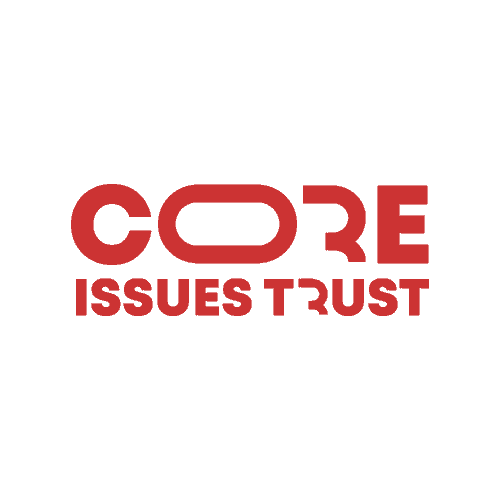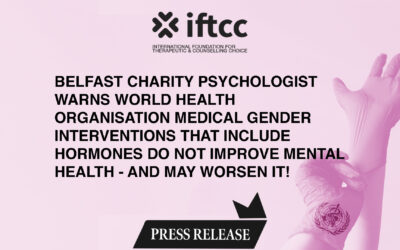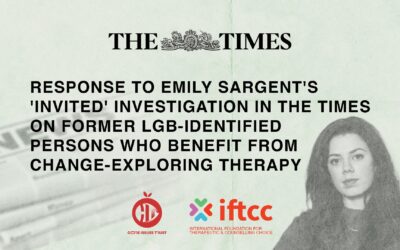Download the full review here (This article was first posted by the Alliance for Therapeutic Choice and Scientific Integrity)
Learning the Right Lessons from a Tragic Personal Story: A Review of the Film and Book, Boy Erased Christopher H. Rosik, Ph.D.
Boy Erased, a movie based on the book of the same title by Garrad Conley, tells the story of the author’s experience at a “conversion therapy” program interspersed with retrospective details from his childhood and closes with his embracing of a gay identity. The film has immense star power with Russell Crow playing the role of the author’s father and Nicole Kidman portraying his mother. Activists and politicians are hoping the film will be a significant aid in promoting legislation to ban such “therapy.” Yet the important legacy of this work should not be as a justification for legislation, but rather a warning to the more conservative sectors of the faith community that caringfor people with same-sex attractions must be informed by non-politicized scientific information and sound ethical and theological sensibilities. Without this, persons seeking to understand, manage, and even possibly change their unwanted same-sex attractions within some religious contexts will continue to be at risk of emotional harm and spiritual alienation.
The Program
The movie begins in 2004 with the 19-year-old Conley (“Jared” in the movie version) traveling with his mother from his home in Arkansas to an intensive day program in Tennessee administered by the now defunct Love In Action (LIA) ministry. One learns in the book that this is the “Source” program of LIA, which is a two- week trial program to determine the length of subsequent “therapy” individuals will need have within the LIA program. It also was priced at $1500. While the movie portrays the program as consisting only of participants experiencing same-sex attractions, in reality the program was unified by a focus on the presumed addictions of many varieties, and only a few participants appeared to present with homosexuality as the presenting issue. It quickly becomes painfully obvious to the viewer that this Christian ministry is of a fundamentalist bent and is lacking in rudimentary knowledge of the professional and scientific literature concerning sexual orientation and responsible avenues for exploring a person’s potential for attraction fluidity and change. Conley is told that the program will “cure” him. If he does not cure himself, he could end up “messing around” with a dog. LIA forbid classical music, saying that Bach, for example, was not a Christian. His phone was taken away during the program for “security purposes.” “Mannish” or boyish clothing was forbidden for women and excessive jewelry was prohibited for men. Conley reports in the book he was told by one counselor that, “It would be better for someone to kill themselves than to live as a homosexual.”

To book: London (Mon 11th) Eventbrite link here Belfast (Thur 14) Eventbrite link here
LIA viewed the cause of and answer to Conley’s homosexuality as residing in his family tree. It was communicated to him that he idolized men because he did not have enough physical contact when he was younger, hence he craved such a bond in his friendships. He was too close to his mother. The lack of sports in his childhood could lead to effeminate behavior. Many of his sexual feelings must be caused by childhood trauma. Some kind of abuse or neglect must lie behind anyone’s problems. And while some of these kinds of beliefs and experiences are not uncommon among those who wish to change or diminish their same-sex attractions and behaviors, what was missing in LIA’s approach was any attempt to elicit how the individual understood the origin of their attractions, which is a starting point for any counseling process that is truly therapeutic. Also lacking is any sensitivity to the conditions under which people were referred to the program. Conley indicates that all of the people in his group had been told to “change or else” or they would end up homeless, penniless, excommunicated, and exiled from their families. The goal of the program appeared to be a mandate to become completely heterosexual.
Read further by downloading the review in pdf format
Conley states that most LIA staff were former patients who had been with LIA for at least two years. The two main counseling staff described in the book were John Smid (named Victor Sykes in the movie) and Danny Crosby. Smid was the director of LIA and a main counselor in the program. He also acknowledged in print that his same-sex attractions had in general not changed. Crosby is identified as a recovering alcoholic who had a college degree in marital counseling, though it seems unlikely that this involved serious graduate studies in the field.
The counseling practices of the LIA staff are woefully below the standard of care for any credible counseling approach. In theory, LIA took their inspiration from the AA model and added an emotionally and spiritually abusive fundamentalist twist. Genograms were used to locate traumas in each participant’s family tree that were responsible for their sinful addictive behaviors. Every day group members had to write down a sinful behavior and share it with the group the next day in order to be absolved of it. This constituted the LIA understanding of taking a moral inventory. Participants in the program were told to give up their past ideas of who they were and leave behind people LIA deemed harmful. The LIA addiction workbook indicated that participants’ sinful and sexually deviant lives had been hijacked by the world and by Satan. Smid encouraged the discovery of heretofore unknown repressed memories of abuse, stating that this repression was the doing of the devil. Theological and sexual shaming seemed to be one common denominator in the LIA approach.
Letter to Pastors and Congregational Leaders from CIT Director
Smid also conduced empty chair exercises in the group counseling, wherein participants were told to imagine their father in the chair and tell him everything negative they had ever felt about him. As a last resort, coercion was utilized, including Smid’s threat that if Conley left the program he could never be cured. Perhaps worst of all, the expectation of complete change combined with the spiritually condemning climate of LIA was tailor made for creating religious alienation. Conley noted that during the program he felt his prayers were not being answered and he ended up telling himself “F… God!” in order to keep Smid’s teachings from bringing him back to self-loathing.
Perhaps the most gut-wrenching scene of abuse in the movie occurs when a young man named Cameron is caught running afoul of the rules and is punished by having his parents and little sister use the Bible to strike him repeatedly and, in some kind of quasi exorcism, a demon is ordered to leave him. He appears to be restored to the program by some kind of cleansing or immersion in a bathtub. Conley’s character later learns that Cameron has committed suicide. However, this story line is completely the product of dramatic license, and there is no indication in the book that such events ever occurred.
Conley’s actual experience at LIA was sufficient to facilitate a process of unintended religious
alienation. This religious disaffection is made all the more tragic by the suggestion in the book that he had a genuinely spiritual, emotionally impacting conversion experience earlier in his youth where he appears to have felt the love of God. The author’s experience of having Christian beliefs “dictated” by his family, questioned at college, and weaponized at LIA, brought him to a place where his nascent faith was utterly shattered and left for dead. One can only wonder how different Conley’s life story might have turned out had he been raised within an emotionally and spiritually healthy Christian community.
Family and Religious Background
The dysfunction that permeated Conley’s family and religious development is painfully evident in the book. Curiously, the family dysfunction is completely eliminated in the movie, where Conley and his mother cannot find a single trauma or addiction to mention on his genogram. It’s as if the screen writer did not want any viewer to imagine the brokenness of Conley’s family could have anything to do with his sexuality, so it was simply left out. But any reader of the book would understandably wonder otherwise. Conley was raised in a fundamentalist Missionary Baptist church, spending his entire youth going to church three times per week. He describes his paternal grandfather as having been an alcoholic who was violently abusive to his father. He believes that his father rebelled against this upbringing by adopting a fundamentalist religion. Vocationally, his father managed the family cotton gin for 25 years, subsequently owning a Ford dealership for six years before becoming a preacher and pastor in his mid-50s. Before Conley was born, his father had been badly burned on his face and hands while trying to be a Good Samaritan and fix a stranger’s broken-down car. His father also had a secret problem with pornography. Conley writes less about his mother, though he does say that she had lost both parents in the recent past and apparently was insecure about her appearance. Before Conley was born, his parents had also lost their first child during pregnancy and because of pregnancy-related dangers for his mother the author was considered to have been a miracle baby. In addition, Conley described an incident where his mother was sexual assaulted by a home intruder, an incident which subsequently made it more difficult for her to sleep. Finally, Conley seems to imply that his parents’ marriage was less than healthy, as they had come to sleep in separate bedrooms during the course of his youth. This marital distress is the only issue among all of these that is even implied in the movie.
Emotional nurturing and secure attachments appear to have been insufficient within Conley’s childhood family and religious community. He indicates in the book that professional therapy was discouraged in his family’s church, as the pastor believed all that was needed to overcome any mental issue or moral confusion was prayer. As is common among male clients with same-sex attractions, Conley reported having a string of male crushes in his childhood. By the time he was in the 7th or 8th grade, he was entertaining same-sex fantasies. Boys were a mystery to him. One girl—Chloe—expressed an interest in Conley, but having no one with whom to confide his struggle, he eventually ended their relationship to the chagrin of his parents and church. He was left feeling alone and evil inside and hopeless unprepared for what he would encounter in college.
Groomed, Initiated, and Outed
As if it was not bad enough to have the synergy of a dysfunctional family system combining with a rigid fundamentalist religious community, Conley also experienced an early homosexual experience that can only be described as seriously abusive. What happened to Conley is not uncommonly reported by others struggling to make sense out of their same-sex attractions, but the storyline in this case is particularly poignant and tragic. In the midst of trying to understand his feelings during his first year at college, including his attraction to his roommate, David (“Henry” in the movie), the young Conley is raped and forced to orally copulate David (the copulation aspect was not evident in the movie). That this incident is predatory in nature is clear from Conley’s report that David had earlier raped a 14-year-old boy in his youth group. In order to deflect from his crime, David then proceeds to out Conley to his parents and imply that he (David) was the victim. Upon this disclosure, Conley reports his father told him he would never be welcomed in his house again or be able to continue his education if he acted upon his same-sex attractions. At this point, Conley describes himself as thinking what would become the title of the book and movie: “Anything, I’ll do anything to erase this part of me” (p. 135).
The rape by David appears to have led to post-traumatic stress symptoms for Conley, who reported that he continued to re-experience this incident and contemplated suicide nightly. He reported experiencing panic attacks. He also described what seems to be his development of an eating disorder, as the one thing he felt he could still control was his weight. None of these ongoing symptoms of post-traumatic stress are really highlighted in the film account. When Conley confided the rape incident to his Presbyterian College pastor, he was counseled to keep the matter secret and thus David’s behavior was never acknowledged or addressed. Conley also implies in the book that this trauma led him to conclude that he was faking it (i.e., heterosexuality), a step in the direction of adopting a gay identity.
Later in his college experience and prior to his admission to LIA, Conley reports in some details his enchantment with Caleb (“Xavier” in the movie), another young man in his dorm, who through marijuana, poetry, and philosophical discussions appeared to be grooming Conley for a homosexual encounter. While Conley maintains the two did not end up having a sexual encounter that night, they did kiss, and for a time laid close to one another on Caleb’s bed. The emotional starvation Conley had grown up with was evidenced in his response to Caleb’s telling him he “had a poetic mind”: “It seemed no one had ever said anything so kind, so true” (p. 305-6).
The only sympathetic figure in Conley’s journey is the physician who he saw for testosterone testing in his parent’s hopes that this might be the explanation for his recently revealed same-sex attractions. Dr. Julie is able to be alone with Conley, and during that time she informs him that he could accept his sexuality and manage a good life. The book seems to imply that the doctor also educated him about a biological basis for homosexuality. The tragedy of Conley having no caring professional in his world who could offer informed guidance countering both spiritual and biological extremes is hard to understate.
Breaking Free
In the dramatic conclusion to Conley’s LIA experience, he is told by Smid during an empty chair exercise in front of the other group members to vent all his anger toward his father. Refusing to express an anger he denies, Conley gets up from his chair and runs out of the group to the receptionist desk and calls his mother in order to have her pick him up. The film shows Conley’s mother being kept away from her son by a locked door, but the book does not mention this detail. The book essentially ends with this scene, but the movie continues by fast forwarding four years into the future where Conley’s character is about to publish an article on his LIA experience that would eventually lead to his book. He now lives an openly gay life in New York with his male partner, but has come back to Arkansas to confront his father. The emotional disconnect is evident in his sorrowful statement, “So many things were never spoken about. I don’t know if we ever will.” The script here seems to be a vehicle to tee up the message the film wants viewers to take home with them: “I’m gay and I’m your son, so let’s deal with that. There’s no changing me. If you want a relationship with me, you’ll have to be the one to change.”
The relational estrangement has come full circle and is now complete. The father who was unable to emotionally bond with his son is now punished by him through emotional blackmail. It is an all so very tragic ending to a story that could have been so different had Conley been blessed with an emotionally healthy family and religious environment as well as professional care givers sensitive to the family’s religious values and cognizant of the insights and limitations of the scientific literature on sexual orientation.
What are the lessons to be learned from Boy Erased?
Boy Erased is being milked by activists for all the momentum it might provide to efforts to legally prohibit “conversion therapy.” The central problem with this is that these bans make no distinction between the abusive “treatment” provided by LIA and the care provided by professional, ethically responsible clinicians represented by the Alliance. Conley’s story should serve as a beneficial warning against overzealous, scientifically uninformed, and abusive religious practices. This appropriate but limited application of Boy Erased, however, is not likely to satisfy activists whose strategy appears to be the further linking of LIA style abuses with “conversion therapy” in the public’s mind while drafting legislation that bans any and all conversation-based approaches to professional therapy not deemed sufficiently gay-affirmative. This is a disingenuous, Trojan horse style tactic, and only time will tell how successful it will be. However, the sparsely attended opening day showing of the movie where I went may indicate that the film will have little interest and resonance beyond the anti-therapeutic choice “choir.”
To summarize, then, here are the lessons I would draw from this heartbreaking story:
- Boy Erased is a valuable teaching moment for conservative and especially fundamentalist religious communities in examining how they address youth and young adults struggling with unwanted same-sex attractions. LIA was a thoroughly religious-based program attaching itself to a veneer of recovery and psychotherapeutic practices with no understanding of the ethical and emotional considerations that must be honored to make such approaches beneficial.
- Conversely, Boy Erased has nothing to contribute to the debates about banning sexual attraction fluidity exploration of unwanted same-sex attractions and behavior by licensed therapists. There is no indication from the book or movie that any licensed mental health professionals were involved in the LIA program. Conley was 19 at the time he went to LIA’s program, so his account is not directly relevant to therapy bans for
minors. Joel Edgerton, the movie’s director, acknowledged he had not consulted with anyone, including licensed professionals, who were sympathetic to a client’s self-determine desire to pursue their heterosexual potential (Rottenberg, 2018). To employ Conley’s story as a justification for restricting the practice of licensed therapists is as misguided as utilizing an attempt to change same-sex attractions via exorcism as a basis for legally prohibiting ordained pastors from engaging in any prayer that does not sufficiently affirm a gay identity. - The optimal way forward would be an educational approach, respecting the moral and sexual values of religious conservatives while providing important scientific information regarding sexual orientation and fluidity in same-sex attractions to minimize harmful excesses. This task is one long embraced by the Alliance but currently insufficiently resourced to have an adequately broad influence.
Reference
Rottenberg, J. (2018, September 11). With the gay conversion therapy drama “Boy Erased,” Joel Edgerton hopes to stir hearts and change minds. LA Times. Retrieved from nto-20180911-story.html





